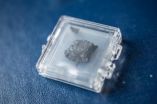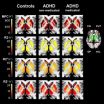(Press-News.org) Melbourne researchers have shown a type of leukaemia can be successfully 'reversed' by coaxing the cancer cells back into normal development.
The discovery was made using a model of B-progenitor acute lymphoblastic leukaemia (B-ALL), the most common cancer affecting children.
Researchers from the Walter and Eliza Hall Institute showed that switching off a gene called Pax5 could cause cancer in a model of B-ALL, while restoring its function could 'cure' the disease.
Institute researchers Dr Ross Dickins and Ms Grace Liu led the study with institute colleagues and collaborators in Vienna. The study was published today in the journal Genes & Development.
Ms Liu said the team used a newly developed 'genetic switch' technology to inhibit then reactivate Pax5 in the leukaemia model.
"Along with other genetic changes, deactivating Pax5 drives normal blood cells to turn into leukaemia cells, which has been shown before," Ms Liu said. "However we showed for the first time that reactivating Pax5 enabled the cells to resume their normal development and lose their cancer-like qualities, effectively curing the leukaemia. What was intriguing for us was that simply restoring Pax5 was enough to normalise these cancer cells, despite the other genetic changes."
In leukaemia, immature white blood cells replicate abnormally and build up in the bone marrow, interfering with production of normal blood cells.
Ms Liu said Pax5 was a gene frequently 'lost' in childhood B-ALL. "Pax5 is essential for normal development of a type of white blood cells called B cells," she said. "When Pax5 function is compromised, developing B cells can get trapped in an immature state and become cancerous. We have shown that restoring Pax5 function, even in cells that have already become cancerous, removes this 'block', and enables the cells to develop into normal white blood cells."
Dr Dickins said the research shed light on the function of Pax5, which was one of about 100 genes known to 'suppress' human tumours. "When these tumour suppressor genes are inactivated by changes to the DNA, cancers start to develop," Dr Dickins said.
"This work shows how inactivating the tumour suppressor gene Pax5 contributes to B-ALL development and how leukaemia cells become 'addicted' to low Pax5 levels to continue proliferating. Even though the B-ALL cells have multiple genetic mutations, simply reactivating Pax5 causes tumour cells to resume normal development and lose their cancerous properties."
Dr Dickins said forcing B-ALL cells to resume their normal development could provide a new strategy for treating leukaemia. "While B-ALL has a relatively good prognosis compared with other cancers, current treatments can last years and have major side-effects. By understanding how specific genetic changes drive B-ALL, it may be possible to develop more specific treatments that act faster with fewer side-effects."
However Dr Dickins said that genes that are lost in tumour cells are not traditionally drug targets. "It is very difficult to develop drugs that restore the function of genes that are lost during cancer development," Dr Dickins said. "However by understanding the mechanisms by which Pax5 loss causes leukaemia, we can begin to look at ways of developing drugs that could have the same effect as restoring Pax5 function."
The genetic switch technology used to study Pax5 could also be used to understand 'tumour suppressor' genes in other cancers, he said.
INFORMATION:
The work was supported by the Australian National Health and Medical Research Council, the Leukaemia Foundation of Australia, the Sylvia and Charles Viertel Charitable Foundation, VESKI and the Victorian Government. The Walter and Eliza Hall Institute is a partner in the Victorian Comprehensive Cancer Centre.
Gene 'switch' reverses cancer in common childhood leukaemia
2014-06-17
ELSE PRESS RELEASES FROM THIS DATE:
E-cigs heavily marketed on Twitter, study finds
2014-06-17
E-cigarettes, also known as vaping pens or e-hookas, are commonly advertised on Twitter and the tweets often link to commercial websites promoting e-cig use, according to University of Illinois at Chicago researchers.
The study, published as a special supplement in the July 2014 issue of Tobacco Control released online June 16, has implications for future FDA regulations on the marketing of e-cigarettes and related products.
"There's this whole wild west of social media platforms – Facebook, Twitter and Instagram – and the FDA has no way to track what's happening in ...
Soft-drink tax worth its weight in lost kilos
2014-06-17
A tax on sweetened soft drinks could be an effective weapon in the war against obesity, generating weight losses of up to 3.64 kilograms as individuals reduce their consumption.
Researchers from Monash University, Imperial College London and University of York and Lancaster University, England have estimated the extent to which drinking habits would change if beverages such as carbonated non-diet soft drinks; cordials and fruit drinks were taxed.
Lead author Dr Anurag Sharma, of the Centre for Health Economics at Monash University, said such a tax could have important ...
Solar photons drive water off the moon
2014-06-17
Water is thought to be embedded in the moon's rocks or, if cold enough, "stuck" on their surfaces. It's predominantly found at the poles. But scientists probably won't find it intact on the sunlit side.
New research at the Georgia Institute of Technology indicates that ultraviolet photons emitted by the sun likely cause H2O molecules to either quickly desorb or break apart. The fragments of water may remain on the lunar surface, but the presence of useful amounts of water on the sunward side is not likely.
The Georgia Tech team built an ultra-high vacuum system that ...
Researchers identify new compound to treat depression
2014-06-17
There is new hope for people suffering from depression. Researchers have identified a compound, hydroxynorketamine (HNK), that may treat symptoms of depression just as effectively and rapidly as ketamine, without the unwanted side effects associated with the psychoactive drug, according to a study in the July issue of Anesthesiology, the official medical journal of the American Society of Anesthesiologists® (ASA®). Interestingly, use of HNK may also serve as a future therapeutic approach for treating neurodegenerative disorders such as Alzheimer's and Parkinson's diseases, ...
Surgical patients more likely to follow medication instructions
2014-06-17
A study in the July issue of Anesthesiology revealed that patients who receive a simple, multicolor, standardized medication instruction sheet before surgery are more likely to comply with their physician's instructions and experience a significantly shorter post-op stay in recovery. These findings are important because surgical patients often fail to follow their doctor's medication instructions for preexisting conditions such as diabetes and hypertension on the day they are having surgery – a costly mistake that can lead to surgery cancellation, complications and longer ...
References resources find their place among open access and Google, study finds
2014-06-17
Los Angeles, CA (June 17, 2014) How do open access sources, tightened budgets, and competition from popular technologies affect how librarians perceive and employ reference resources? How do librarians expect to utilize reference in the future? "The State of Reference Collections," a new SAGE white paper out today, finds that though the definition of reference is changing, this is in part because reference resources now look and feel like other information sources and because other information resources perform the traditional purpose of reference – answering research ...
Study links APC gene to learning and autistic-like disabilities
2014-06-17
BOSTON (June 17, 2014, 4:00 a.m. EDT) — Autistic-like behaviors and decreased cognitive ability may be associated with disruption of the function of the Adenomatous Polyposis Coli (APC) gene. When Tufts researchers deleted the gene from select neurons in the developing mouse brain, the mice showed reduced social behavior, increased repetitive behavior, and impaired learning and memory formation, similar to behaviors seen in individuals with autism and intellectual disabilities. This study is the first to evaluate how the loss of APC from nerve cells in the forebrain affects ...
MRI technique may help prevent ADHD misdiagnosis
2014-06-17
OAK BROOK, Ill. – Brain iron levels offer a potential biomarker in the diagnosis of attention deficit hyperactivity disorder (ADHD) and may help physicians and parents make better informed treatment decisions, according to new research published online in the journal Radiology.
ADHD is a common disorder in children and adolescents that can continue into adulthood. Symptoms include hyperactivity and difficulty staying focused, paying attention and controlling behavior. The American Psychiatric Association reports that ADHD affects 3 to 7 percent of school-age children.
Psychostimulant ...
Fecal transplants restore healthy bacteria and gut functions
2014-06-17
Fecal microbiota transplantation --- the process of delivering stool bacteria from a healthy donor to a patient suffering from intestinal infection with the bacterium Clostridium difficile --- works by restoring healthy bacteria and functioning to the recipient's gut, according to a study published this week in mBio®, the online open-access journal of the American Society for Microbiology.
The study provides insight into the structural and potential metabolic changes that occur following fecal transplant, says senior author Vincent B. Young, MD, PhD, an associate professor ...
Combining treatments boosts some smokers' ability to quit
2014-06-17
DURHAM, N.C. -- Combining two smoking cessation therapies is more effective than using just one for male and highly nicotine-dependent smokers who weren't initially helped by the nicotine patch, according to researchers at Duke Medicine.
The findings, published online June 17, 2014, in the American Journal of Psychiatry, also support using an adaptive treatment model to determine which smokers are likely to succeed in quitting with nicotine replacement alone before trying additional therapies.
"The findings offer a potential practical treatment approach that can identify ...





